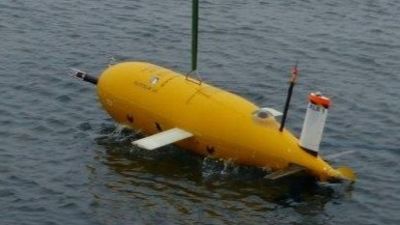Boaty McBoatface to take part in study of global warming at the South Pole

The underwater robot christened Boaty McBoatface following a public vote is heading to the South Pole where it will be used for research into climate change.
Scientists from the Cambridge-based British Antarctic Survey and the University of East Anglia in Norwich will use the robot, and a fleet of others like it, to look at the impact global warming is having on the Thwaites Glacier and its effect on sea level rise around the world.
The team are currently heading towards the glacier, which covers 74,000 sq miles, an area about the size of Great Britain , from Punta Arenas in Chile.
They are leaving on Wednesday as it is the 100th anniversary of the polar explorer Sir Ernest Shackleton's death.
A team of 32 international scientists will set sail on the US National Science Foundation icebreaker Nathaniel B Palmer bound for the remote glacier in West Antarctica.
Some $50m is being spent on the joint UK and US mission to learn more about Thwaites Glacier, its past, and what the future may hold.
Professor Karen Heywood, from UEA, said: “This is a massively ambitious mission that we have been planning for several years.
"We will deploy two big underwater robots underneath the ice to collect detailed data from this crucial area of the glacier that will enable us to understand what will happen in the future.
"I and my team back at UEA are going to be remotely piloting the six ocean gliders, smaller robots, once the scientists on board launch them into the water.”
The robot Boaty McBoatface was given its name after it came top in a public vote to name a research vessel in a public vote.
However, the choice was overruled by ministers and it was instead named the RSS Sir David Attenborough, after the TV naturalist and presenter.
As a compromise, one of the boat's mini long-range submarines was named Boaty McBoatface instead.